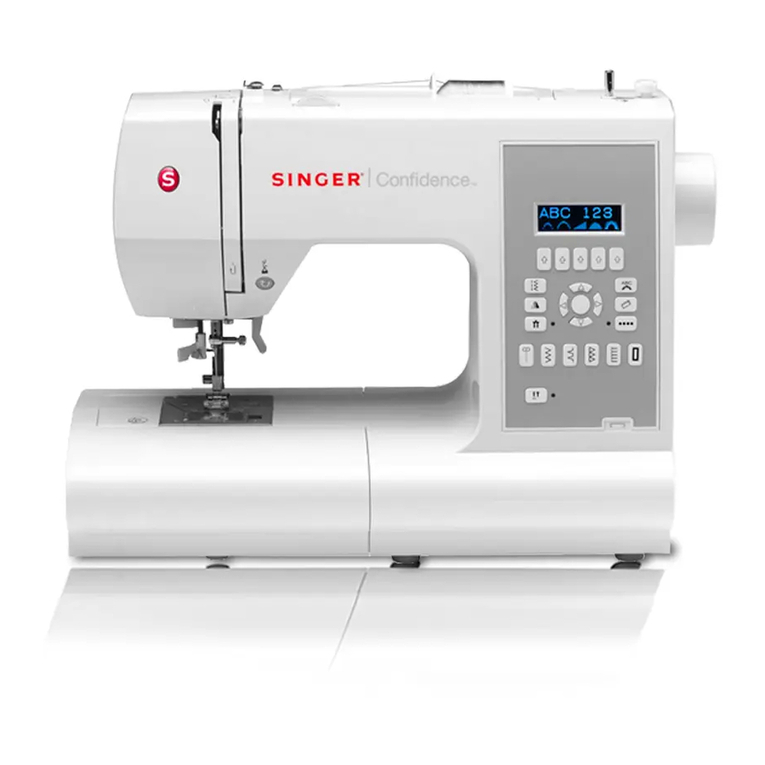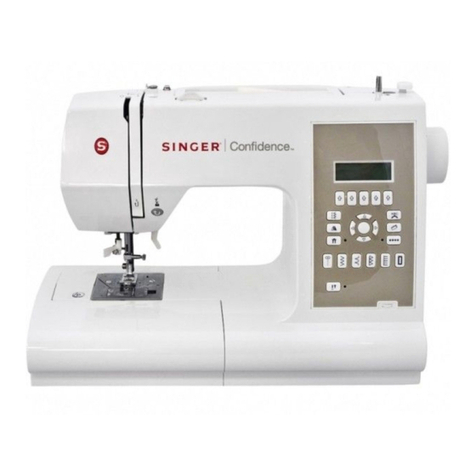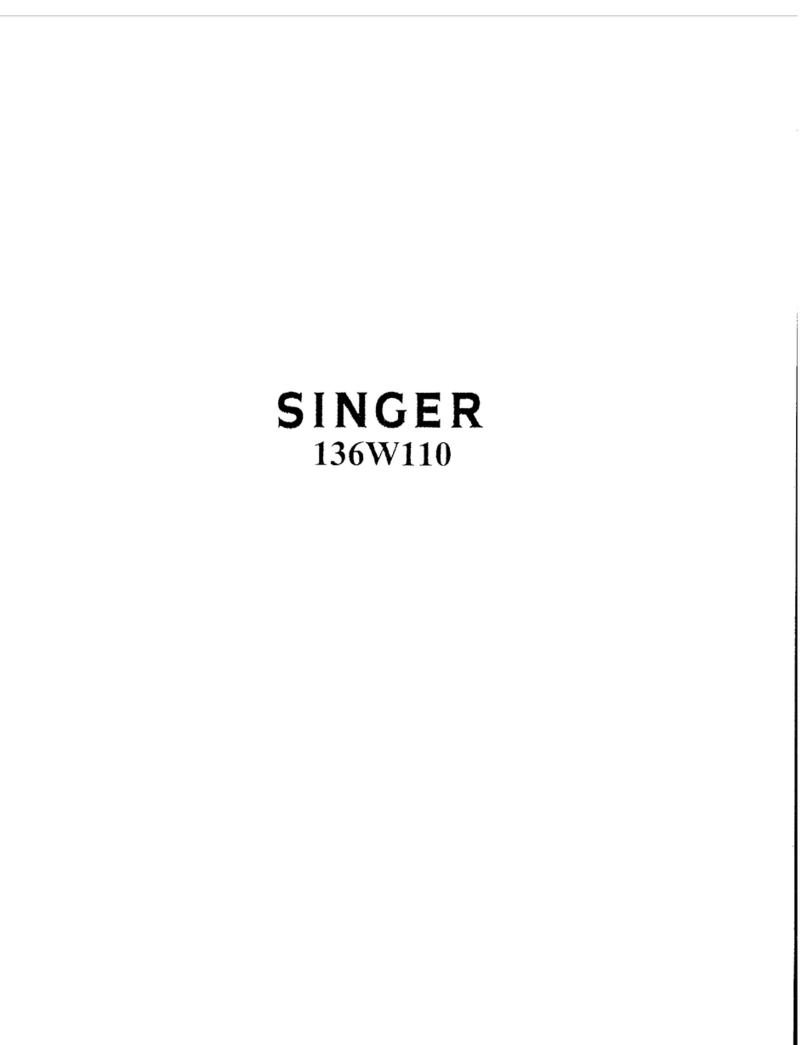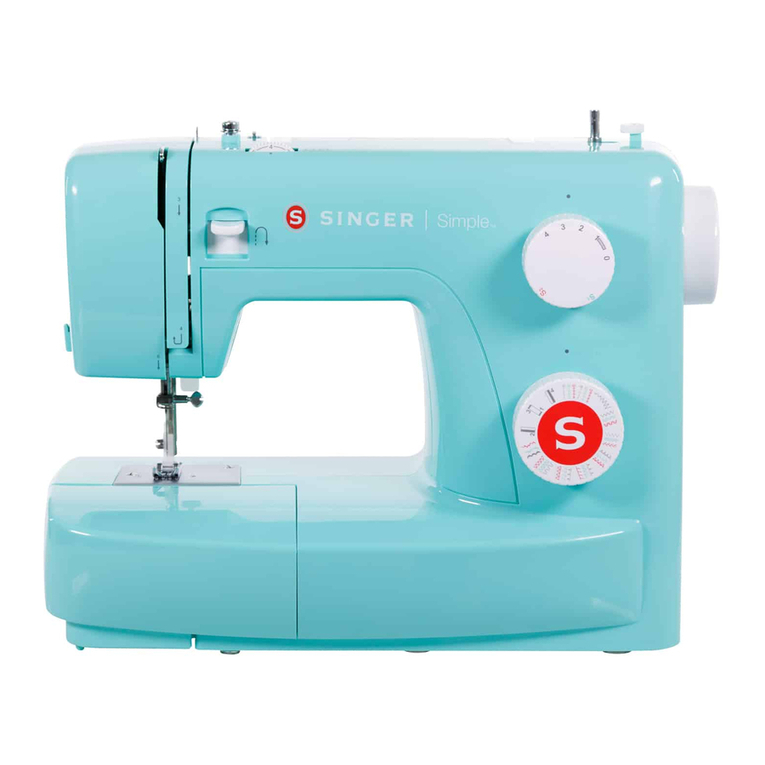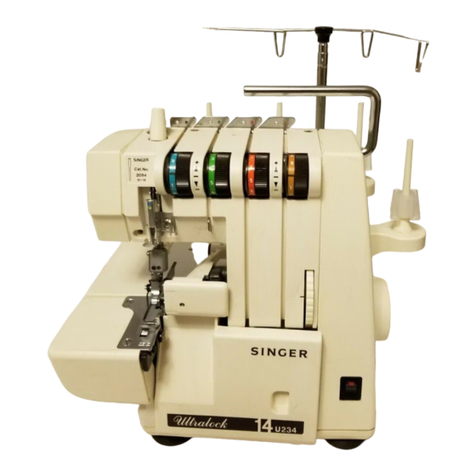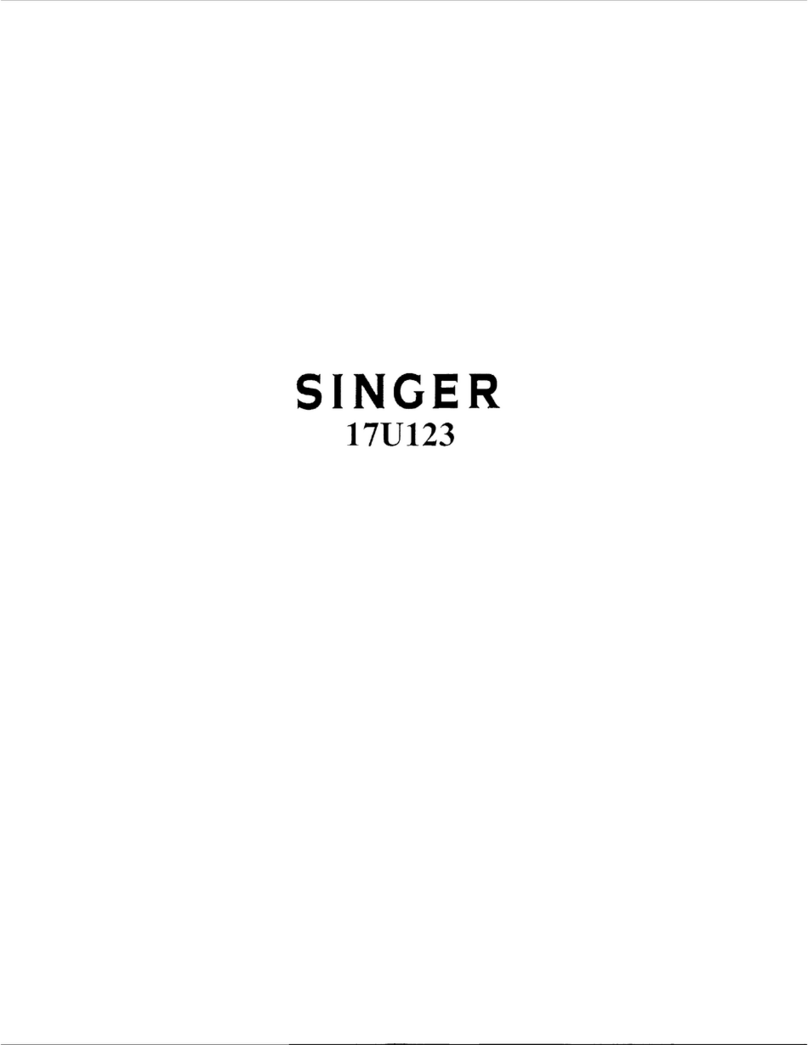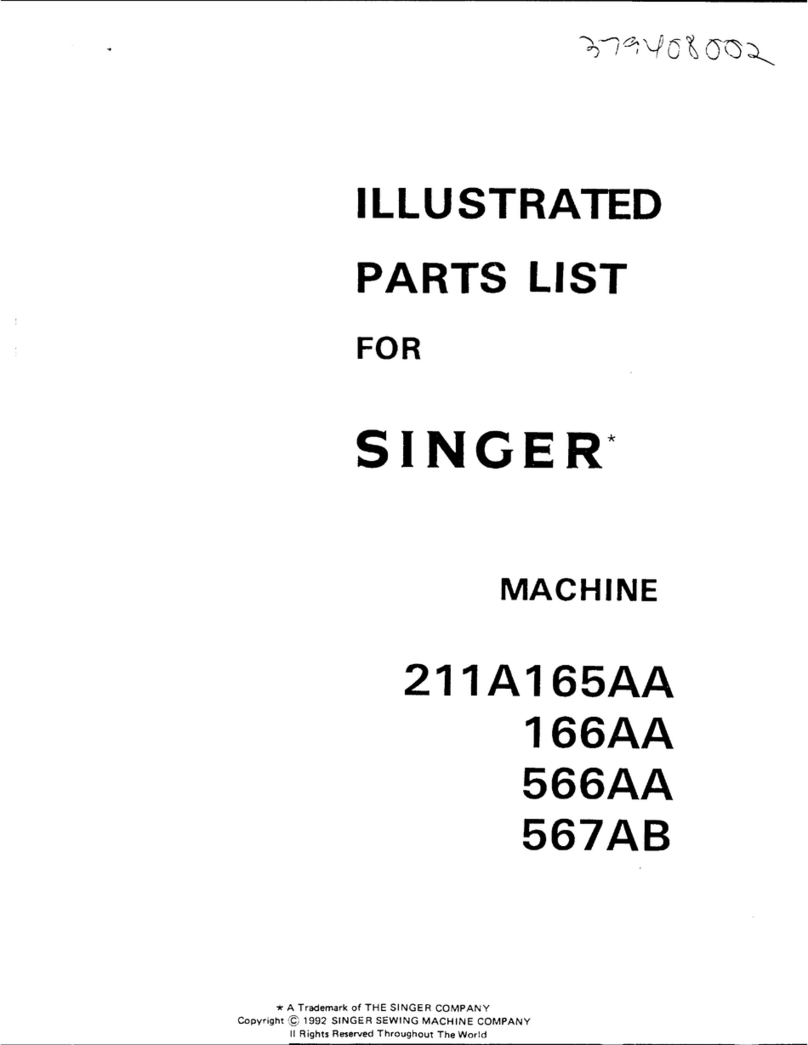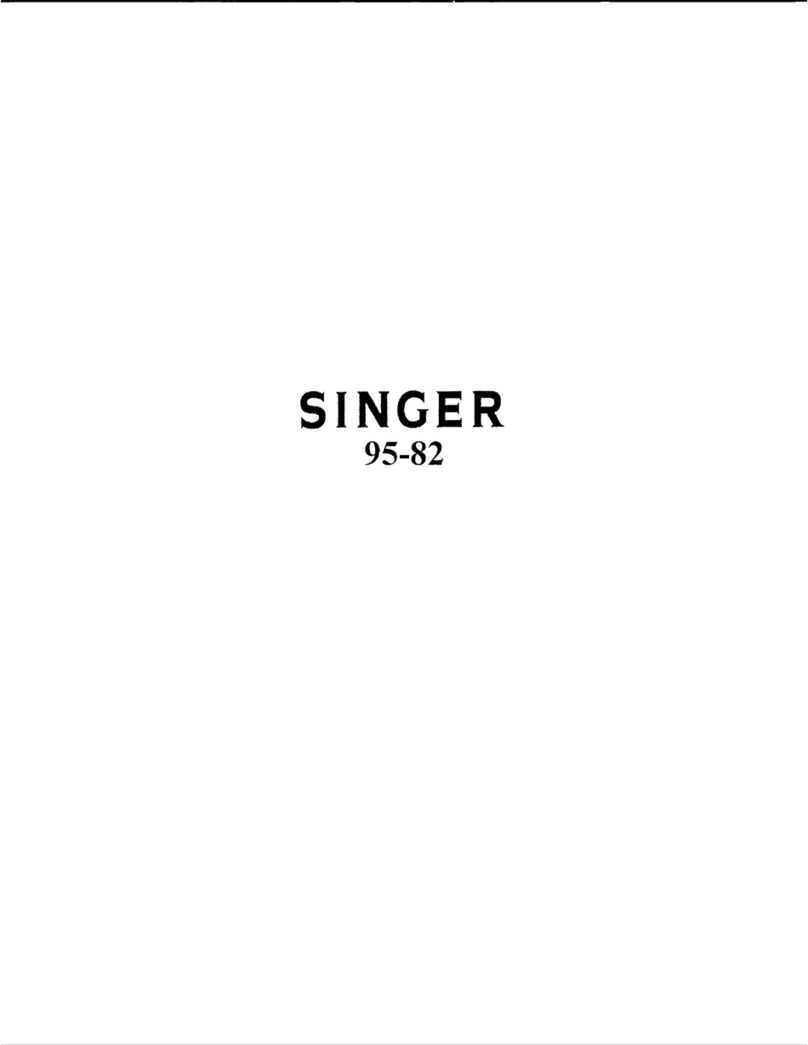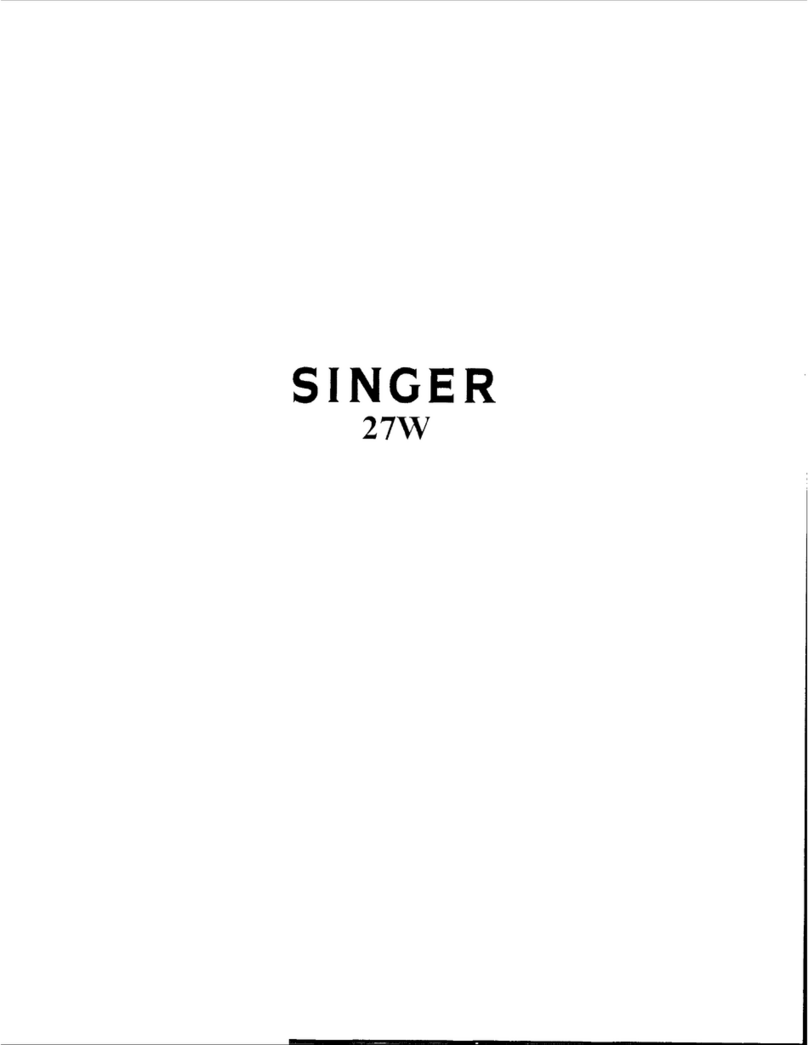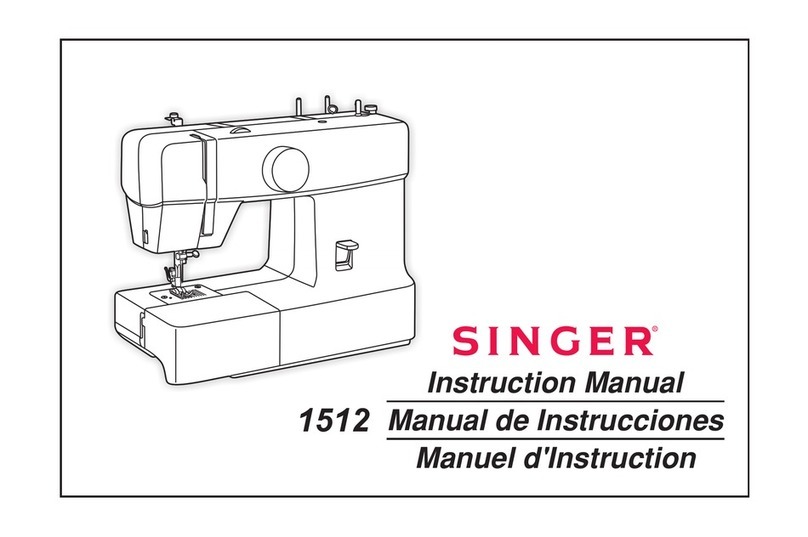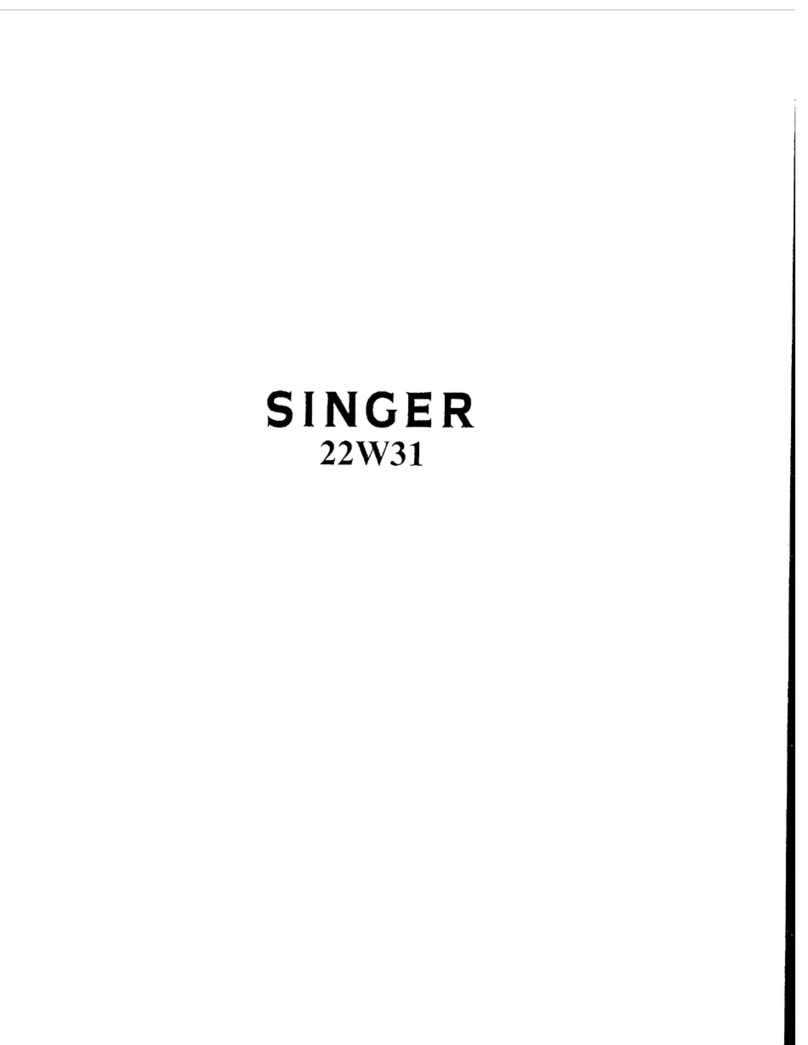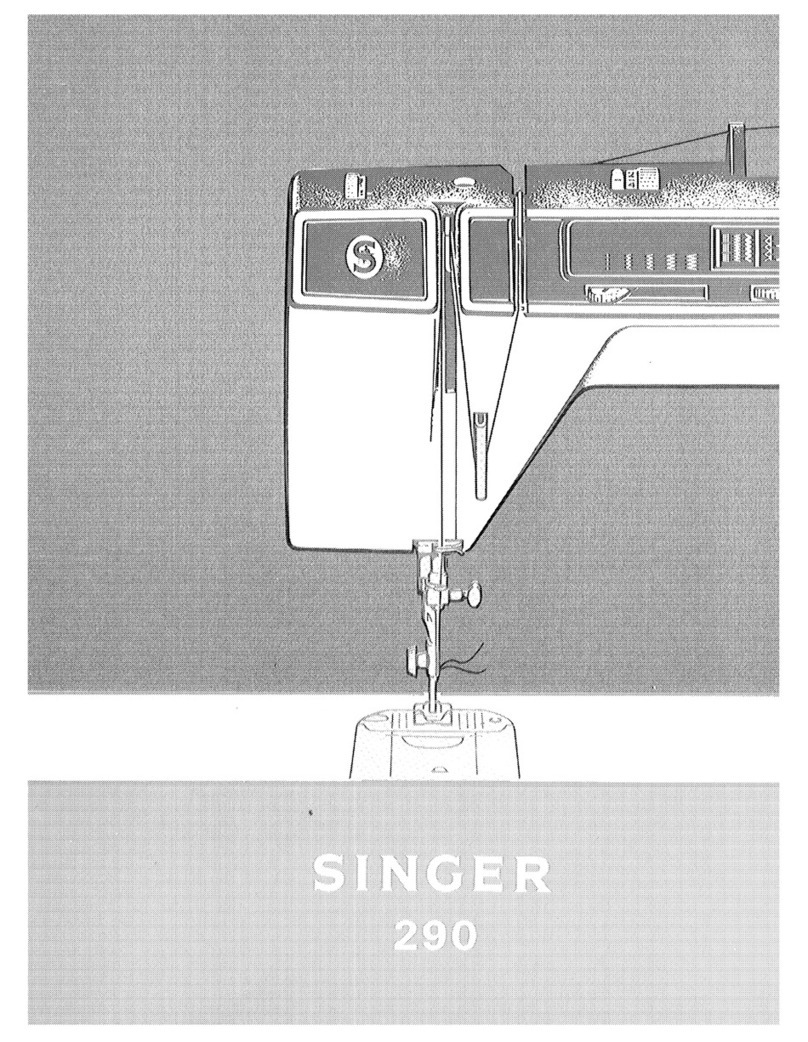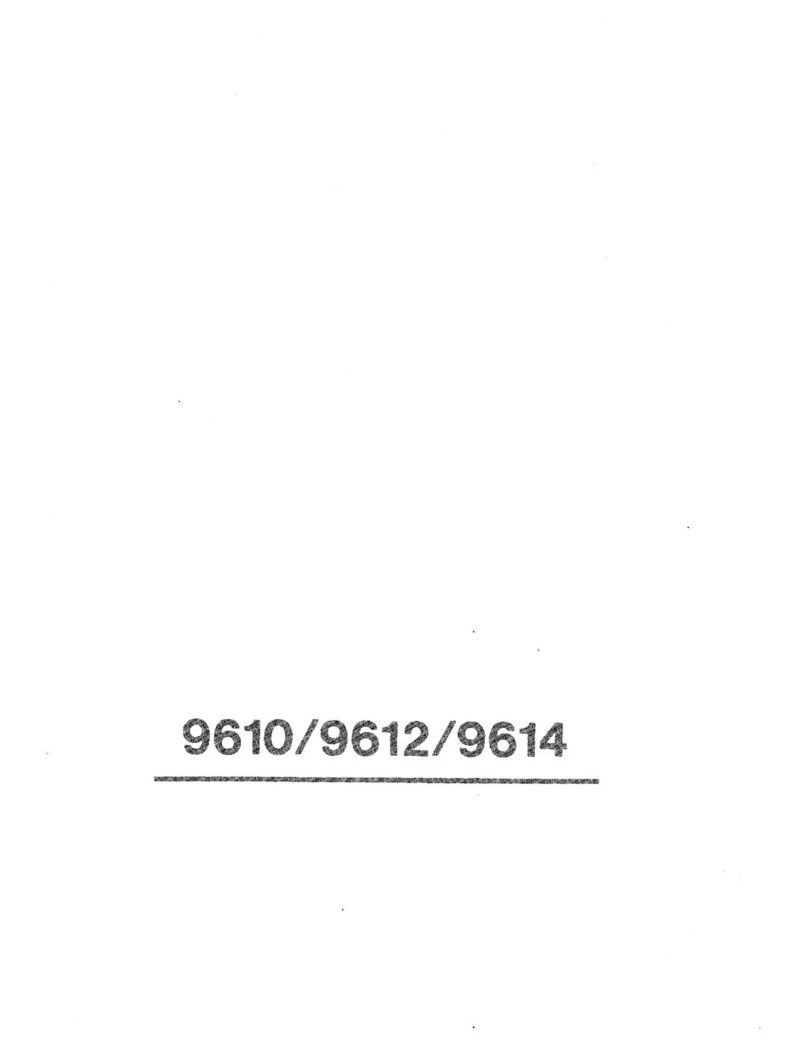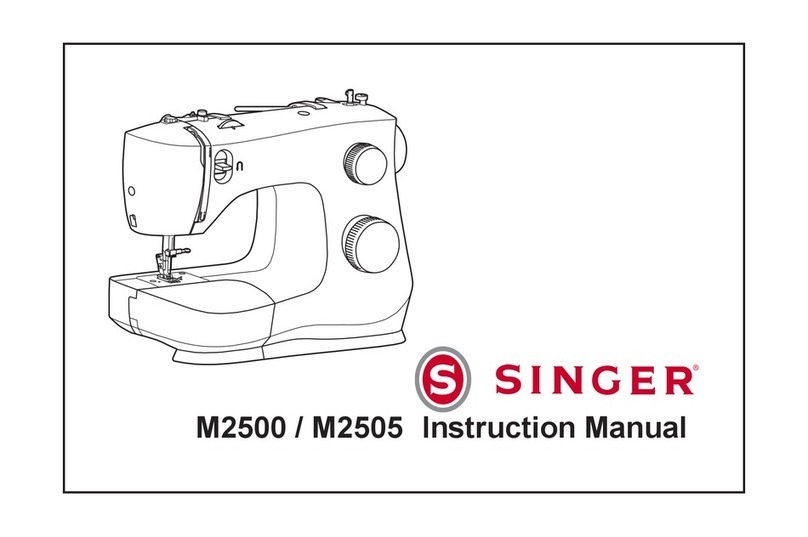
DESCRIPTION
Machine 15-90,
for family use, has an oscillating
shuttle on a horizontal axis and makes the lock stitch.
It has reverse feeding mechanism by means of
which the machine stitches as readily in a reverse
direction as it does in a forward direction.
It is especially designed for operation by elec-
tricity, having an electric motor attached to the
upright part of its arm. The motor drives the ma-
chine through a belt.
It is also equipped with an electric Singerlight.
Before starting to darn or embroider, make the
simple adjustment on the machine, as instructed
on page 33.
"SINGER" SERVICE
Now that you have purchased your new "SINGER,"
we do not want you to feel that your relations with
us have come to an end. You are cordially invited
to visit your "SINGER" Shop at any time for assis-
tance in your sewing problems. You will be most
welcome.
We hope, too, that you will make the "SINGER"
Shop your headquarters for sewing supplies and ser-
vice. Only there or through authorized bonded
"SINGER" representatives can you secure genuine
"SINGER" oil, needles, belts, parts, etc., so im-
portant in getting the best results from your machine.
And remember, only an authorized "SINGER" rep-
resentative should be allowed to touch your machine
when repairs or adjustments are required.
World-wide "SINGER" Service has no equal. Use it!
DESCRIPTION
Machine
15-90,
forfamilyuse,hasanoscillating
shuttleona horizontalaxisandmakesthelockstitch.
It
hasreversefeedingmechanismbymeansof
which
themachinestitchesasreadilyina reverse
direction
asit
does
ina forwarddirection.
It
isespecially
designed
for operationbyelec-
tricity,
havinganelectricmotorattachedtothe
uprightpartofitsarm.Themotordrivesthema-
chine
througha belt.
It
is
also
equipped
with
anelectricSingeriight.
Beforestartingtodarnorembroider,makethe
simpleadjustmentonthemachine,asinstructed
on
page
33.
"SINGER"SERVICE
Now
thatyouhavepurchasedyour
new
"SINGER,"
we
donotwantyoutofeelthatyourrelations
with
ushave
come
toanend.Youarecordiallyinvited
to
visit
your
"SINGER"
Shopatanytimefor
assis-
tanceinyoursewingproblems.You
will
be
most
welcome.
We
hope,too,thatyou
will
makethe
"SINGER"
Shopyourheadquartersfor sewingsuppliesandser-
vice.
Only
thereorthroughauthorizedbonded
"SINGER"
representativescanyousecuregenuine
"SINGER"
oil,needles,belts,parts,etc.,soim-
portant
in
gettingthe
best
resultsfromyourmachine.
And
remember,onlyanauthorized
"SINGER"
rep-
resentativeshouldbeallowedtotouchyourmachine
when
repairsoradjustmentsarerequired.
World-wide
"SINGER"
Servicehasnoequal.Useit!
